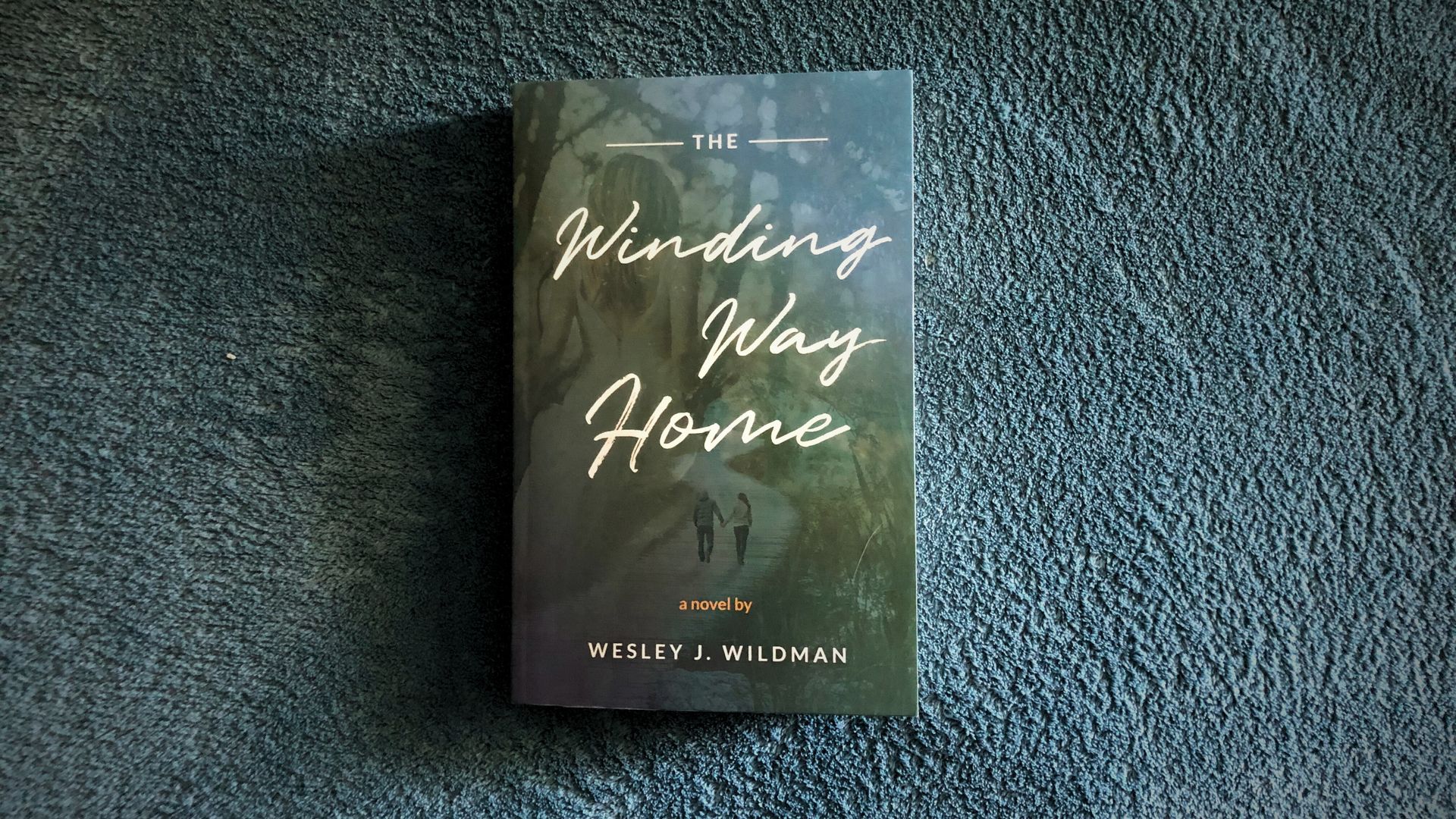Episode 12: The Winding Way Home
Video:
Audio:
Transcript:
My takeaways from the novel by Wesley J. Wildman titled The Winding Way Home.

This novel takes you on a journey through the latter half of the life of a brilliant, prideful man. Jesse, a 41-year-old university professor, revels in the wonder of all things as they exist in the universe, the beautiful interconnections of philosophy, biology, mathematics, physics, and chemistry. He has the ability to remember everything he has ever learned or experienced, and to organize these ideas into stacks in his memory. He can then pick and choose things to experience from those memory stacks. Jesse visualizes all of this in striking detail throughout his daily interactions with others.
Jesse and his wife Alexandra love their three children, but they spend a great deal of time worrying about what will happen to them. Their youngest child is sweet and beautiful, but she seems to attract a lot of stares and attention from strangers, so they are constantly on guard around her. Their eldest son is high-functioning on the Autism spectrum and has trouble with social interactions. The middle child, though easy-going and very social at first, develops problems with substance abuse. They also worry about Alexandra, as her mother had Alzheimer’s disease, and Alexandra eventually does develop memory problems. Although they are a close, loving family, all of these issues lead to much anxiety and drama.
When one of their children goes missing, an undiagnosed anxiety disorder sends Jesse reeling. Disdaining a therapist’s warnings of an imminent mental collapse, Jesse develops his ability to visualize everything even further to feel more connected with his lost child. Jesse incorporates the horrific possibilities of his child’s fate with the beautiful images of his child’s life with the family. These forge in Jesse a sense of wonder and worship of the lost child and their place in the universe. This leads to actual hallucinations of his child and conversations with the hallucination. These visions, while frightening at first, end up being therapeutic. They represent a down-to-earth view of life as seen from a child’s perspective. They are a part of Jesse’s mind that can help him work through the stress and trauma he has experienced.
One of the central themes of this book is viparinama dukkha*.* Even though Jesse uses this phrase to help his kids understand how letting go of something pleasant can be satisfying, he struggles with this concept himself when it comes to dealing with his own life.
But through his conversations with the hallucinated images of his lost child, he is reminded of the importance of acknowledging pain, grief, and even pleasant experiences as fleeting. If you let these events and feelings wash over you and then let them go, you do not suffer. Keeping fresh the pain of the past, feeling the frustration of the present, and fearing the loss of the ephemeral, beautiful moments—these things prevent one from achieving the acceptance that leads to peace.
There is much more to this book that I will leave for you to discover. I found it difficult to read at first because the imagery evoked by Jesse’s thought processes and the trauma experienced by the family overwhelmed me. I’m very glad I made it through, though. Days later, I still feel the power of the lessons learned and Jesse’s journey towards spiritual fulfillment.
I was inspired by this book to find out more about viparinama dukkha. I found that it is but one of three kinds of suffering in Buddhist teachings, and that my therapist actually taught me these things in his own way.
Dukkha dukkha is the kind of suffering we inflict on ourselves when we dwell on an unpleasant condition—physical pain, mental anguish, etc. If we are able to let these things happen and pass as the impermanent things they are, we do not suffer; we go on with our lives and make room for other experiences. This is something I personally need to conquer as arthritic pain spreads and intensifies as I age. It’s easy to focus on the pain and let it drown out everything else, but when I accept it as just another part of my physical being, I can let it go and achieve serenity.
Viparinama dukkha arises when we are experiencing something pleasant and fear its loss. We try to hang onto these moments, knowing that when they pass we will feel sad, longing for what was lost. This makes it difficult to actually enjoy what we have while we have it. I have struggled with this myself. My life and my relationships with my children and husband have been so fulfilling that I have often felt maybe things were going too well. I often worried that every little tiff with my spouse would lead to divorce. I feared the loss of my children to kidnapping or death. It took a long time for me to realize that simply accepting what comes is the key to happiness.
Sankhara dukkha correlates with what my therapist calls “the memo”, wishing for things to be the way you want them to be. When you are frustrated by being stuck in traffic, or you get angry when a server gets your order wrong, your memo to the world says, “This isn’t what I wanted! I need to go faster! I want what I ordered!” When you accept that the world doesn’t owe you anything and things don’t always go according to your wishes, you are one step closer to peace.
As you read this book, think about these things and how the different characters go through these stages of suffering. Then look at your own life. Try to let go of your longing for the world to fit your idea of what it should be. Strive to accept what is and is not, and then let go of the rest.

